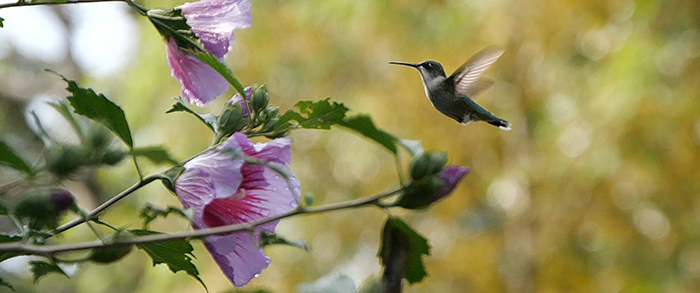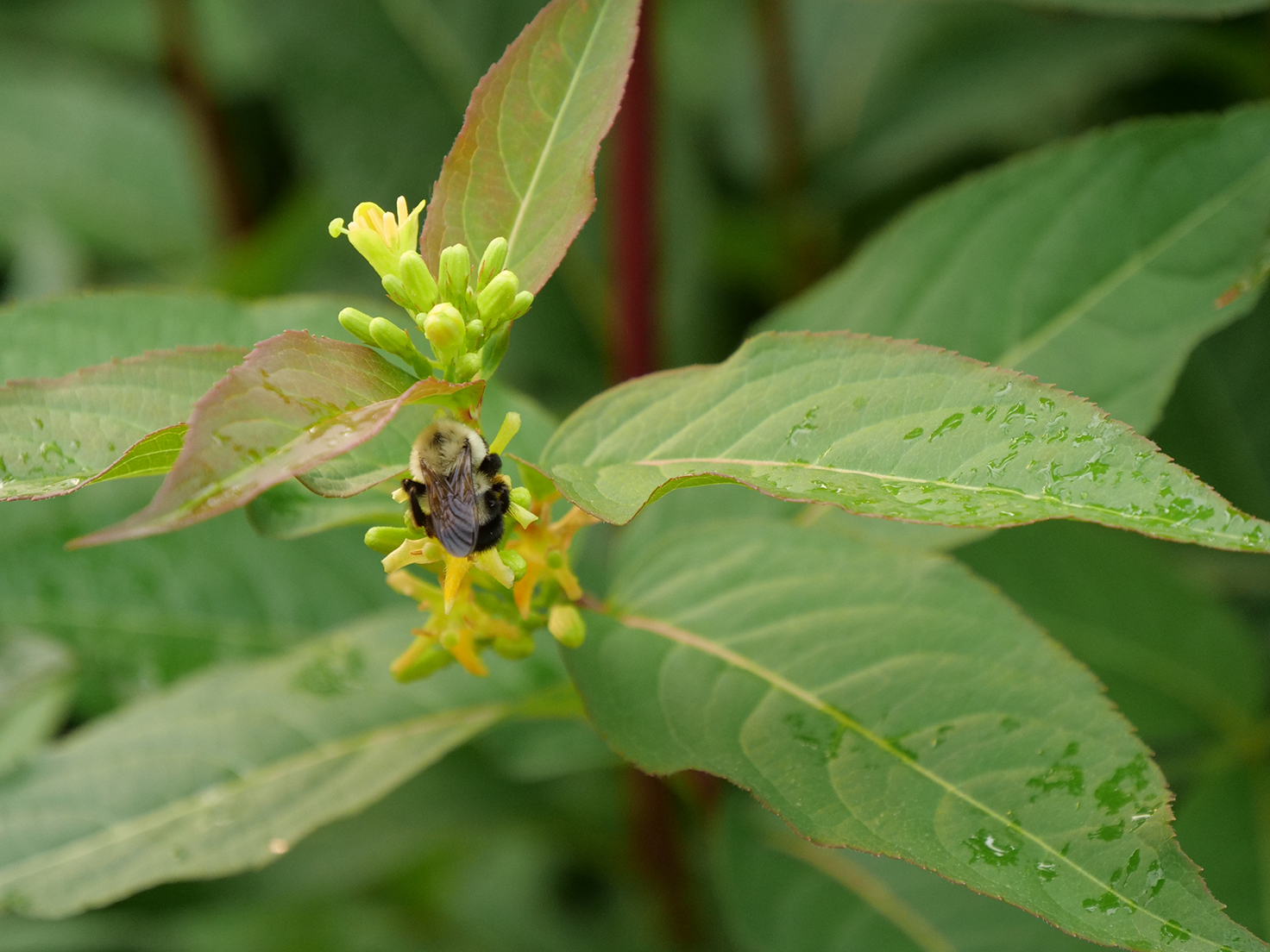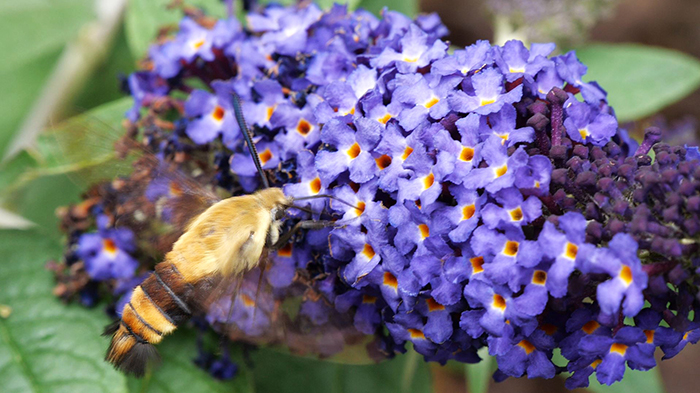Supporting Pollinators 🐝🦋
Plant-based strategies for supporting pollinators
You’ve probably read the news stories on the “insect apocalypse”: the recent steep decline in insect populations and the potentially dire consequences it holds for other animals and ourselves. It’s easy to get discouraged listening to all the doom and gloom, but the good news is that this is an issue we can all play a part in resolving. The solution is so simple: plant something. Plants and their flowers play a crucial role in sustaining insects, and they in turn sustain everything that eats them, and on up the food chain.

The relationship between plants and insects is a vital, even foundational, aspect of our ecosystem, and it’s well past time for us to rid ourselves of an antiquated “bugs are yucky!” mindset. Inviting insects to your garden and observing their behavior, watching them interact with each other and with your plants is truly one of the most fascinating and rewarding parts of being a gardener. Even if you’ve never planted a thing in your life, it’s not too late to get started and take the first step toward a better environment. Here are some tips to help you pick the right plants, plant them in the right places, and grow them with maximum benefit to insects – as well as to you and your community.
A place in the sun
- When planting to support pollinators, prioritize spots that get at least six hours of sun. Insects need the sun because their body temperature is dependent on their surroundings, and they quickly become sluggish and inactive in cool, shaded conditions. Plus, plants in the sun will bloom more, their flowers will produce more nectar, and will see far more pollinator activity than plants in the shade. Though there are plenty of shade-tolerant plants that can benefit pollinators, a sunny site is key to supporting pollinators.

Host a banquet
- To sustain all types of pollinators throughout the garden season, you need plants that attract them from the earliest spring days to the last chilly moments of autumn. To do this well takes planning and research before you buy. Since spring tends to be the biggest garden center shopping time, most people’s gardens tend to favor early-blooming plants that look great during this period and peter out later. Both you and the pollinators will find reward in expanding your garden to include plants that bloom in summer and beyond. Late season blooming plants, like abelia, heptacodium, and caryopteris are especially crucial, since they provide new and rich nectar sources when pollinators need them most – before they go dormant, lay eggs, and/or migrate.
- One way to accomplish this is to include all three main types of plants in your garden: annuals, perennials, and shrubs. Annuals bloom all summer, helping to make up for any lulls between the bloom of perennials and shrubs. Combining all of these plants keeps your garden interesting to you and to pollinators – here are my top ten annuals, perennials, and shrubs for pollinators to get you started on your plant picking.
Click here to shop pollinator friendly annuals.
Click here to shop pollinator friendly perennials.
Click here to shop pollinator friendly shrubs.
The necessity of native plants
- Native plants are a key component of any garden for pollinators. Insects have evolved to rely on these plants for food, shelter, and reproduction, so they hold particular appeal. Even if a plant is not native to your specific area, you’ll likely find that native plants, in general, attract more or perhaps different pollinators than non-native plants do. A garden doesn’t have to be 100% comprised of native plants to support pollinators, but it should contain at least some native perennials and shrubs.
Take it to the bank

- When creating a pollinator garden, avoid planting just one of anything. It’s easier to create more naturalistic designs by grouping plants in odd numbers (3, 5, or 7 are all good numbers for residential landscaping), plus creating banks of plants encourages uninterrupted foraging for pollinating insects. It’s kind of the horticultural equivalent of your reaction to seeing a plate heaped with cookies versus a plate with just one. Abundance is simply more enticing!
Let them eat leaves
- Many people have an immediate negative reaction to seeing the leaves or flowers of their plants being chewed. And it is true that there are pest insects (Japanese beetles, for example) that cause enough damage that they may need to be managed. However, native insects feeding on leaves is completely natural and a sign that you are truly supporting pollinator populations. In fact, a caterpillar won’t turn into a butterfly or moth unless it feeds on leaves for several weeks first. If you see holes in the leaves of a plant, don’t automatically assume that chewing means something bad is happening – spend some time digging into the cause. Plants can easily withstand insects feeding on their foliage, and except in a few extreme cases, won’t suffer or be set back by it.
Don’t use pesticides
- Obviously, if you are trying to support insect life, using chemicals or other strategies (like sticky traps or even non-native praying mantis releases) that kill insects is going to be counter-productive. The truth is that there are few cases where pest insects become so serious that they need control, and that by treating your garden as an ecosystem of multiple species working together to support one another, you create a self-sustaining predator-prey balance - provided you refrain from spraying pesticides, whether they are organic or conventional.
- This approach applies to more than just insects. For example, moles are important predators of grubs, and can play a key role in managing Japanese beetle and other pest beetle populations, so rather than get out the trap or poison at the first sign of a mole tunnel, think of them as free pest control.
Get to know your new neighbors

- It won’t take long for pollinators to begin stopping by your garden to check out the offerings. Get to know who’s visiting with these resources:
- Garden Insects of North America by Whitney Cranshaw. This picture-filled book is a fantastic value and a must-have for anyone looking to learn more about insects.
- Pollinators of Native Plants by Heather Holm. Heavy on the photos and the information, this very well-researched book will help you better understand the relationship between plants and pollinating insects.
- Attracting Native Pollinators: The Xerces Society Guide. The Xerces Society for Invertebrate Conservation does lots of important work to sustain pollinating insects; their book is a great reference, as is their website.
- The Lady Bird Johnson Wildflower Center – their native plant directory is outstanding, and includes specific information about how the plant benefits insects. I rely on this heavily for information on caterpillar host plants especially.
- Butterflies and Moths of North America – this fantastic website is invaluable for identifying butterflies, moths, and their larvae.
- The internet in general – when I encounter an insect I can’t immediately identify, I find that I can pretty quickly narrow it down by doing an image search using general terms, like “Michigan fuzzy black orange caterpillar.” If you’re able to snap a photo, you can also try something like Google Lens to match it to visually similar content online.
You can start making a difference today - so what are you waiting for? Get out there and plant something.
Questions? Email them over to helpdesk@provenwinnersdirect.com, we're happy to help!









